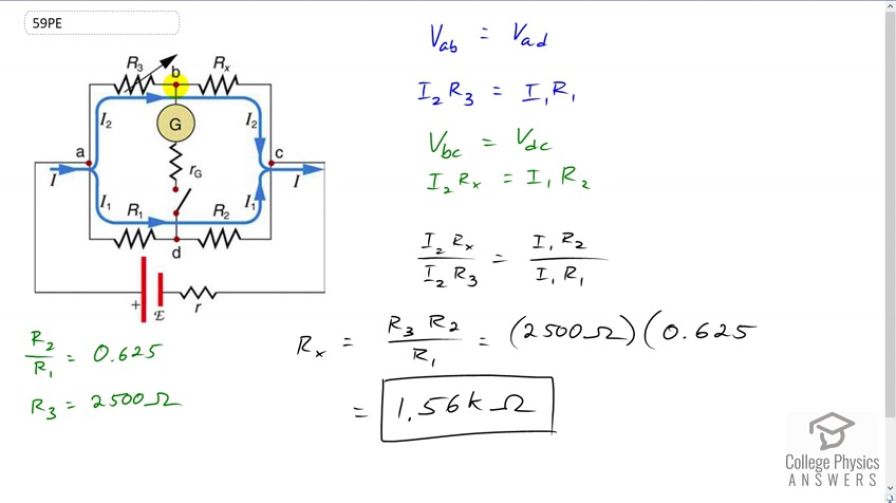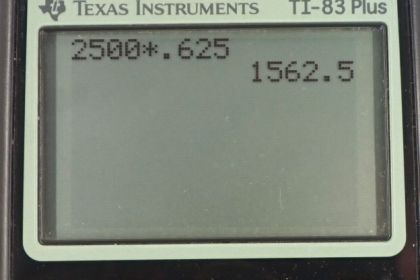Question
When an unknown resistance is placed in a Wheatstone bridge, it is possible to balance the bridge by adjusting to be . What is if ?
Final Answer
Solution video
OpenStax College Physics for AP® Courses, Chapter 21, Problem 59 (Problems & Exercises)

vote with a rating of
votes with an average rating of
.
Calculator Screenshots
Video Transcript
This is College Physics Answers with Shaun Dychko. In a Wheatstone bridge, this resistance number three is adjusted such that no current will want to flow through this galvanometer. I don't know why they put this switch in there because this switch is closed actually, and despite being closed no current flow through because this resistance is adjusted so that the voltage across it is equal to the voltage across resistance one. So that's what this is saying algebraically. This is saying voltage from point A to B is the same as voltage from A to D. So the current through resistor three which is I two, multiplied by R three, is equal to the current to resistor R one which is I one multiplied together. Likewise, since there is no current flowing through this galvanometer, the voltage across this unknown resistance R x is going to equal the voltage across resistor R two. So we say I two R x equals I one R two. Then we can take the ratio of this to that and this to that. We can divide these two equations in other words, and we'll be able to cancel I two and I one which we don't know and now we don't care about them because they cancel away. We get R unknown, R x, divided by R three equals R two over R one. Then we can solve for R x by multiplying both sides by R three. So R x is R three times R two over R one and we don't know what R two and R one is but we're told what the ratio of the two are and that's what we care about. We're told that R three is 2500 ohms. So 2500 times 0.625 is 1.56 kilo-ohms, that is the unknown resistance R x.
